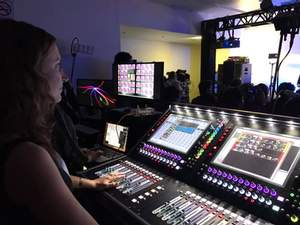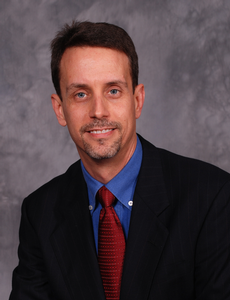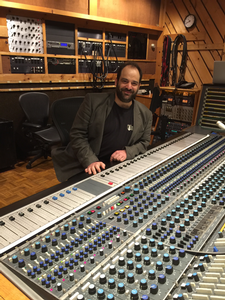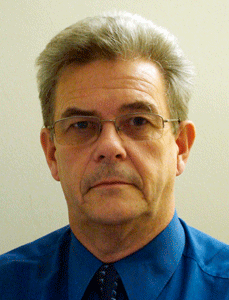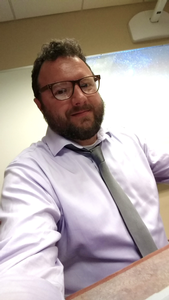AES New York 2019
Sound Reinforcement Track Event Details
Wednesday, October 16, 9:00 am — 10:30 am (1E13)
Networked Audio: NA01 - Solution-Based Approaches for Networked Audio in Live Production
Moderator:Dan Ferrisi, Sound & Communications - Port Washington, NY, USA
Panelists:
Tim Boot, Global Brand Strategist, Meyer Sound - Berkeley, CA, USA
Genio Kronauer, L-Acoustics - Marcoussis, France
Morten Lave, Adamson Systems Engineering
Patrice Lavoie, Solotech
Jamie Pollock, Kore Audio Design LLC
With AV increasingly residing on networks, engineers, end-users, integrators and others responsible for system design and implementation face new challenges. Products and systems are becoming increasingly complex with new functionality; managing networks require IT expertise; and audiences expect even greater experiences – particularly in live-sound applications where size and scale can range substantially. Organizations like the Avnu Alliance’s Milan workgroup are providing solutions for networked audio that directly improve both the engineer and audience experience, with audio, video, and data able to coexist in one network via a single cable connection that does not cause interference between the data packets.
This session’s panel will feature live sound industry experts and end users discussing the challenges that face AV systems engineers and others today, and how solutions for networked audio like the Milan protocol help address these needs. Technical aspects will be examined, such as scalability; how much planning is involved; do you have to be an IT expert; as well as real-world systems case studies in networked live sound applications with lessons learned shared and technical solutions discussed.
Attendees will leave with an understanding of the importance of solutions-based networked audio, and how to integrate technology like Milan into their systems, how to build it into the design and layout on an AVB network, and the benefits it brings to both the integrator or sound engineer, as well as the audience.
Wednesday, October 16, 9:15 am — 10:45 am (1E21)
Recording & Production: RP01 - Miniature Microphones—Why Are They So Attractive?
Chair:Eddy Bøgh Brixen, EBB-consult - Smørum, Denmark; DPA Microphones - Allerød, Denmark
Panelists:
John Born, Senior Product Manager, Shure Inc. - Niles, IL, USA
Benjamin Nimkin, independent sound designer - New York, NY, USA
Ryan Rumery, Sounddesigner & Composer, Pen o Three - Brooklyn, NY, USA
Miniature microphones are used all over the place: For stage sound, for film sound, for television, for sound effects, etc. Traditionally these fine instruments are electret condenser types. This is why it has been possible to make them small with data comparable to many of the bigger brothers and sisters. This event has a panel of experts both from the manufacturing side as well as the user side. In this workshop some of the leading manufacturers will present their unique technology and some of the top designers from the live theater/film will demonstrate how the stuff works in practical sound design. Also a look into future technologies will be given that includes binaural applications for VR/AR.
 | This session is presented in association with the AES Technical Committee on Microphones and Applications |
Wednesday, October 16, 10:30 am — 12:00 pm (1E17)
Immersive & Spatial Audio: IS01 - ISSP: Immersive Sound System Panning. An Interactive Software Application and Tools for Live Performances
Presenter:Ianina Canalis, National University of Lanús - Buenos Aires, Argentina
Spatial audio has been gaining popularity in the area of commercial live performances, and immersive audio systems are now available for large as well as small concerts. There are a number of challenges in developing and implementing immersive and spatial audio systems; in particular the use of dedicated hardware interfaces. This workshop introduces the Immersive Sound System Panning (ISSP) software application, which allows a free choice in the position of the speakers and sound sources. ISSP has two versions; the first one processes the audio in a DiGiCo mixer and the second one, in a computer.
This software was designed with the specific aim of making it user-friendly and to make an immersive system that is more intuitive to mixing engineers, artists, and the public. The tools have been designed with the express needs of sound engineers and artists in mind, specifically as spatial sound is a new way of expressing music. The idea is that artists and the public can also take part in what happens with the audio as involving them will intensify the experience for everyone.
This workshop showcases the Immersive Sound System Panning (ISSP) application, the main features of the software and the tools that have been developed to spatialize the sound within the space. Within the workshop, the audience will be encouraged to get/use hands-on with the app and demonstrate its features, showing the intuitive nature of the app design and the ease with which sounds can be panned around the space.
https://www.youtube.com/watch?v=Aw-YseB23R0
Wednesday, October 16, 10:30 am — 12:00 pm (1E09)
Product Development: PD02 - Directivity Optimization of a Passive Loudspeaker System
Presenter:Charles Hughes, Excelsior Audio - Gastonia, NC, USA; AFMG - Berlin, Germany
Almost all types of loudspeaker systems will benefit from having a consistent directivity response with respect to frequency. It is an important contributor for the loudspeaker system to be able to sound good in different rooms with different acoustical properties. This is often overlooked or relegated in importance in order to give priority to the on-axis frequency response. This seems particularly true when dealing with two-way loudspeaker systems employing a passive crossover. However, this need not be the case. In this session the performance of a product recently evaluated from an overseas ODM / CM will be examined. We will detail how software modeling and simulations can be used to optimize the passive crossover to improve the directivity of the loudspeaker system through the crossover region. A single-channel of front-end DSP can then be used to equalize the overall response of the loudspeaker system. Since the directivity response is more consistent, the equalization can be more effective at improving the sound quality of the loudspeaker system.
Wednesday, October 16, 1:30 pm — 3:00 pm (1E12)
Sound Reinforcement: SR01 - Large-Scale Loudspeaker System Calibration, from Simulation-Based Design to Onsite Tuning
Presenters:Etienne Corteel, L-Acoustics - Marcoussis, France
François Montignies, L-Acoustics - Marcoussis, France
Scott Sugden, L-Acoustics - Oxnard, CA, USA
The objective of a calibration is to ensure that the onsite performances of a loudspeaker system meet specific project requirements. It implies the optimization of the solution that was defined at the design stage, accounting for the environment in which the system was implemented. Onsite tuning is at the core of the process. It adopts a check and adjust approach, using measurements and electronic settings to reach a defined level of expectation. The calibration should not be a solution to correct major design issues, whether they come from the manufacturer or from the user. Nowadays, high-end manufacturers provide the user with loudspeaker processing presets that optimize direct-sound and multi-way crossovers. That removes a lot of the onsite optimization process that was performed by the users in the past. However, a meticulous definition of the sound system solution is still critical, especially in the physical deployment of a system. On this aspect, the use of advanced modeling and simulation software minimizes the risk for design errors. Simulation-based design also allows to anticipate most of the electronic settings to further reduce the onsite tuning time. One additional and major benefit is that a 3D simulation gives an overview of the results over the whole audience area, whereas onsite tuning needs to rely on a limited number of measurements locations, leading to high risk of wrong electronic adjustment choices. This tutorial presents a complete optimization process that starts at the design stage, planning the physical deployment parameters, the zoning groups within line source arrays, the optimal main-sub alignment location and the time-alignment of fill systems. Onsite tuning can then use measurements and critical listening to validate the planned solution and to address remaining simulation uncertainties.
 | This session is presented in association with the AES Technical Committee on Acoustics and Sound Reinforcement |
Wednesday, October 16, 3:00 pm — 4:30 pm (1E12)
Sound Reinforcement: SR02 - Canceled
Thursday, October 17, 9:00 am — 12:00 pm (1E13)
Sound Reinforcement: SR03 - RF Super Session
Co-chairs:Jason Glass, Clean Wireless
James Stoffo, Independent - Key West, FL, USA
Presenters:
Mark Brunner, Shure Incorporated - Niles, IL USA
Joe Ciaudelli, Sennheiser - Old Lyme, CT USA
Jim Dugan, JetWave Wireless
Cameron Stuckey, Firehouse Productions - New York, NY, USA
Gary Trenda, Professional Wireless Systems - Orlando, FL, USA
Karl Winkler, Lectrosonics - Rio Rancho, NM, USA
Tremendous changes in the RF ecosystem are currently taking place affecting available spectrum, equipment, workflow, and required knowledge base in the deployment of wireless microphones and similar equipment. This three part full [morning/afternoon] super session will discuss in depth RF spectrum and regulatory changes; a manufacturers update; and best and advanced RF practices including filtering techniques and RF over fiber.
Panelists include leading RF technicians and engineers, manufacturer product specialists and the manufacturers' government relations people.
Spectrum Update Panel
James Stoffo - Moderator
Mark Brunner, Shure
Joe Ciaudelli, Sennheiser
Karl Winkler, Lectrosonics
Manufacturers
James Stoffo - Moderator
[TBD]
Advanced Practices Panel
Jason Glass, Clean Wireless Audio - Moderator
Jim Dugan, JetWave Wireless
Cameron Stuckey, Firehouse Productions
James Stoffo
Gary Trenda, Professional Wireless Systems
Thursday, October 17, 1:00 pm — 1:45 pm (1E12)
Acoustics & Psychoacoustic: AP03 - Shame on Us: Phase Is Not Polarity!
Presenter:Cesar Lamschtein, Kaps Audio Production Services - Montevideo, Uruguay; Mixymaster - Montevideo, Uruguay
Being disappointed with the industry regarding how messy the concepts of PHASE and POLARITY get to students, general amateur audio enthusiasts and even seasoned professionals. I think that AES is to the only one that can and SHOULD do something to encourage the stopping of the practice of freely exchanging these terms.
E.g, • major console brands, either analog and digital in either plain word or the ø symbol; • Daw software (nuendo, reaper, etc.); • outboard equipment (including such classics as 1073 neve eq); • videos (Allan Parsons MTCS DVD); • books.
During this presentation I will: • Acknowledge the situation: I´ll show the results of a survey done on the 2 past NY conventions, where 100% of the polarity switches in the exhibition floor was reviewed and photographed, showing inconsistency in the naming of the switch even in different products from the same manufacturer; • Teach terms: I´ll state actual definitions and clarify the concepts of phase and polarity with audio examples of each; • Encourage the discussion: I want to gather people together to nourish this venture, discussing possible abbreviation and symbol (ICON) to represent polarity in order to gather information that may lead to an AES TD; • I´ll invite fellow audio men and women to speak properly about those important concepts (and THEN be able to think properly about this quite basic concepts, albeit misunderstood).
Thursday, October 17, 3:00 pm — 5:00 pm (1E11)
Sound Reinforcement: SR04 - IP Based Live Production Intercom Systems
Chair:Mac Kerr, Bedford Hills, NY, USA
Panelists:
Joe Foley, Capital City Sound
Brian Maddox
Brian Ready, CP Communications
IP based intercom systems have been around for a while but are now quickly replacing proprietary backbone schemes for both large matrix and small partyline systems in live production environments and studio installations. This session will look at best practices and considerations to design, deploy, and configure an IP based system as well as look at the many product offerings from a range of manufacturers.
Thursday, October 17, 3:15 pm — 4:30 pm (1E09)
Product Development: PD10 - Diagnostics for Production Vehicle Audio Systems
Presenters:Jonathan Gerbet, Klippel GmbH - Dresden, Germany
Steven Hutt, Equity Sound Investments - Bloomington, IN, USA
Steve Temme, Listen, Inc. - Boston, MA, USA
Audio systems in production vehicles are known to exhibit vehicle to vehicle performance variance [1]. The root causes of variance can include loudspeaker driver manufacturing tolerance, mounting issues such as missing or misaligned gaskets, or wrong loudspeaker drivers mounted in the system. A diagnostics method to compare actual production vehicle audio systems is defined along with a method for correction and calibration of production vehicle audio systems. The diagnostics procedure may be implemented at production end-of-line, at vehicle distribution center or at a dealer service center in the field after delivery to a customer.
 | This session is presented in association with the AES Technical Committee on Loudspeakers and Headphones |
Friday, October 18, 9:00 am — 12:00 pm (1E12)
Sound Reinforcement: SR05 - AC Power, Grounding, and Shielding Super Session
Presenters:Bruce Olson, Olson Sound Design, LLC - Minneapolis, MN, USA; AFMG Services North America, LLC - Minneapolis, MN, USA
Bill Whitlock, Whitlock Consulting - Ventura, CA, USA
Significant misinformation still persists about what is needed for AC power, and proper grounding, for events — much of it potentially life-threatening advice. Two of the leading authorities on the subject will discuss in detail how to provide AC power properly and safely and without causing noise problems. The session will cover theory and practice of AC power for small to large sound systems, from a couple boxes on sticks up to multiple stages in ballrooms, road houses, and event centers; large scale installed systems, including multiple transformers and company switches, service types, generator sets, 1ph, 3ph, 240/120 208/120.
Friday, October 18, 1:15 pm — 3:15 pm (1E21)
Sound Reinforcement: SR06 - Panel Discussion on Sound System Optimization
Presenters:Jamie Anderson, Rational Acoustics LLC - Woodstock, CT, USA
Bob McCarthy, Meyer Sound - New York, NY, USA
Merlijn van Veen, Meyer Sound Laboratories - Berkeley, CA, USA
An open discussion about sound system optimization with a panel of veterans in this field. Topics will include the latest techniques and improvements in analysis technology. Panelists will discuss equalization, phase alignment, time alignment, speaker aiming, beam steering, subwoofer array control and field examples.
Friday, October 18, 3:15 pm — 5:15 pm (1E21)
Sound Reinforcement: SR07 - Psychoacoustics for Sound Engineers
Presenter:Peter Mapp, Peter Mapp Associates - Colchester, Essex, UK
The tutorial will discuss and illustrate a number of psychoacoustic phenomena and effects that we use every day when designing and setting up sound systems. Understanding how we hear and discriminate sounds can lead to improved system design, alignment, and optimization. Topics that will be discussed include how we integrate and perceive sounds arriving from different directions and at different times and levels, perception of frequency and frequency balance, the audible effects of latency in systems, IEMs and sound / video synchronization, the Lombard speech and level effect, binaural listening versus monaural measurement.
 | This session is presented in association with the AES Technical Committee on Acoustics and Sound Reinforcement |
Friday, October 18, 4:15 pm — 5:45 pm (1E13)
Sound Reinforcement: SR08 - Your Noise Isn’t My Noise: Improving Sound Exposure and Noise Pollution Management at Outdoor Events
Chair:Adam J. Hill, University of Derby - Derby, Derbyshire, UK
Panelists:
Etienne Corteel, L-Acoustics - Marcoussis, France
Bob McCarthy, Meyer Sound - New York, NY, USA
Elena Shabalina, d&b audiotechnik GmbH & Co. KG - Backnang, Germany
Andy Wardle, University of the Highlands & Islands - Perth, UK
Sound exposure and noise pollution due to outdoor entertainment events carry implications spanning both public and private life. This isn’t a new issue. The AES library contains papers published over 50 years ago discussing these issues, although judging by the continued discussion and debate, it’s clear that the industry has yet to reach a universally-accepted solution (or even understanding) of the relevant problems. This workshop is intended to present the current state of affairs surrounding the issue of outdoor event sound/noise, as identified by the AES Technical Committee on Acoustics and Sound Reinforcement (TC-ASR) working group that has been investigating these issues since 2018. The two principal areas of investigation are sound exposure on-site and noise pollution off-site. These issues are different in nature and require distinct approaches to mitigate negative short-term and long-term effects associated with event-related sound/noise exposure.
 | This session is presented in association with the AES Technical Committee on Acoustics and Sound Reinforcement |
Saturday, October 19, 11:15 am — 12:15 pm (1E21)
Recording & Production: RP20 - Live Concert Sound
Moderator:Terri Winston, Women's Audio Mission - San Francisco, CA, USA
Panelists:
Fela Davis, Christian McBride - Ft. Lee, NJ
Liz Ip, Freelancer - New York, NY USA
Michelle Sabolchick Pettinato, Sound Engineer- Elvis Costello - Scranton, PA USA; MixingMusicLive.com
This all-star panel of live sound engineers mix the biggest name acts in the business. Drawing from their experience running sound in arenas and large venues all over the world, these women will share their tips and tricks, from using EQ and learning the problematic frequencies of instruments to choosing the best outboard gear, and the systems typically used. This panel will explore what a day on a major world tour looks like, how to adjust to the acoustics of different venues, the difference between the positions of FOH and monitors, and how to successfully manage a life of constant touring.
 | This session is presented in association with the AES Technical Committee on Recording Technology and Practices |
Saturday, October 19, 11:30 am — 12:30 pm (1E12)
Sound Reinforcement: SR09 - Improving Education and Knowledge Transfer in Sound Reinforcement
Chair:Elena Shabalina, d&b audiotechnik GmbH & Co. KG - Backnang, Germany
Panelists:
Etienne Corteel, L-Acoustics - Marcoussis, France
Adam J. Hill, University of Derby - Derby, Derbyshire, UK
Malle Kaas, Women in Live Music - Europe
Manuel Melon, Le Mans Université - Le Mans cedex 9, France
This panel will focus on how people populating the field of sound reinforcement can work together more efficiently. Tasks in sound reinforcement have a wide range: From using a sound system, designing sound system to product development to applied research, and fundamental research. All those tasks involve musicians, mixing engineers, electrical and communication engineers, acousticians and noise control engineers, software developers, signal processing and scientific computing specialists, physicists and mathematicians, to name just a few. They require different educational backgrounds, different professional experience, and often very different ways of thinking. These differences can make the communication and knowledge transfer very challenging in everyday work.
However, in order to create the best possible experience for the audience, all the parts of the chain should work together smoothly, making sure nothing gets lost on the way and no important part is missing. The panelists will address the topic from their unique perspectives and will try to identify what works well in our field and what needs improvement in future.
How do we make sure that all parts of the whole picture get enough attention? Is there enough research? Are we missing some important new ideas being developed in other fields? What to study to work in sound reinforcement? What background is needed to work in fundamental research, R&D, sound system design or to become a mixing engineer? Can users of sound systems get all the knowledge they need? Are there any specific knowledge gaps? What can we do to improve the situation?
 | This session is presented in association with the AES Technical Committee on Acoustics and Sound Reinforcement |
Saturday, October 19, 3:30 pm — 5:00 pm (1E12)
Sound Reinforcement: SR10 - Seven Steps to a Successful Sound System Design
Presenter:Josh Loar, Michigan Technological University - Houghton, MI, USA; The Producers Group - Burbank, CA, USA
Sound systems are getting more complex every day. In the era of digital audio, network-enabled devices, and complex interdependent show control, developing a sound system design can feel like a daunting task. Josh Loar (author of The Sound System Design Primer available from Focal Press/Routledge) presents a systematic, seven step process for designing any sound system that demystifies the process, and allows the prospective designer to make logical choices, and maximize the elegance and efficiency of the technical solutions chosen. Loar introduces a question and answer process for the designer that allows them to parse the system needs in any gear category—identifying what specs are most relevant to the work of the designer, and what questions a designer must ask and answer in the process. Additionally, Loar discusses the differing needs of various classes of system, from live theater and concert systems, to studio and production systems, to theme parks, casinos, and other installed systems.

